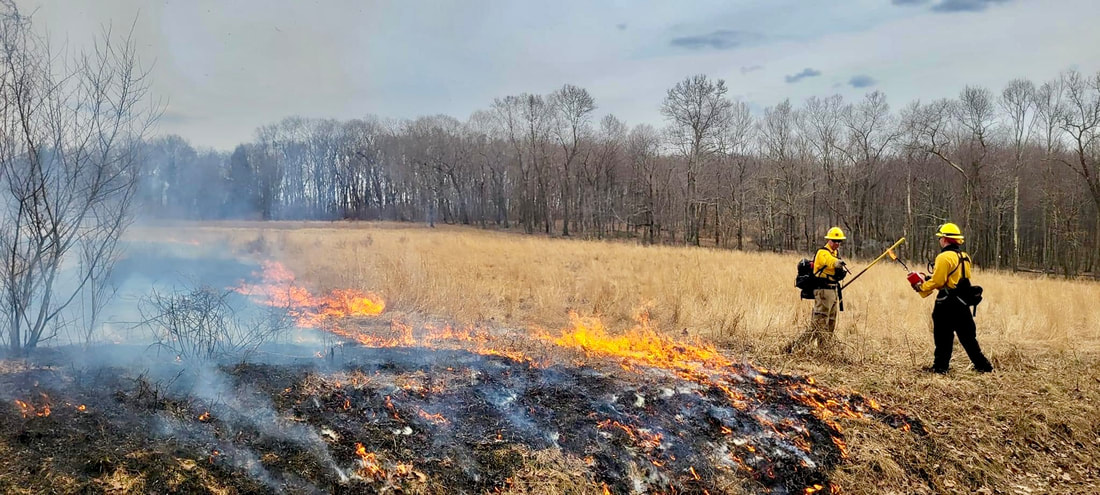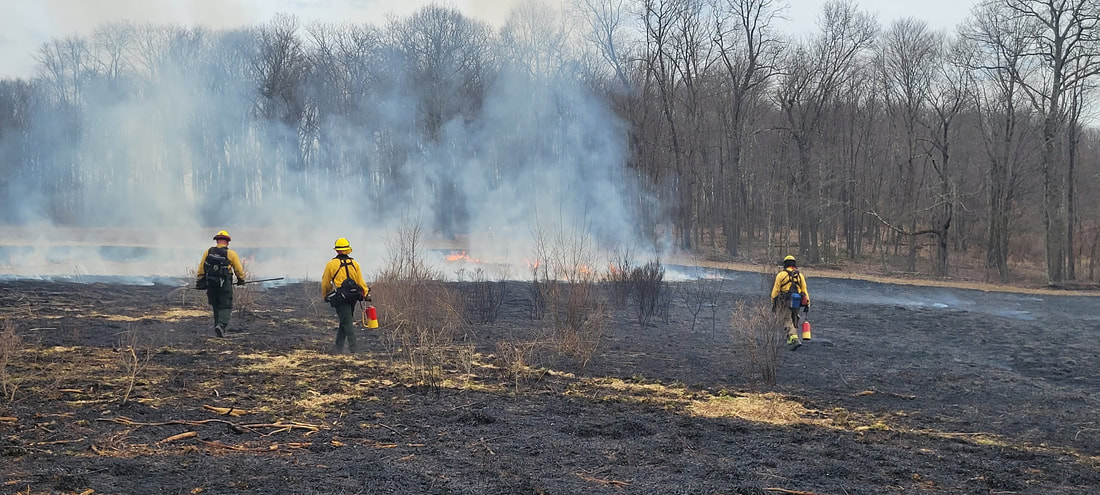By Jacob Kosker
I had originally decided to run at State Game Lands 253 and the adjoining dirt roads nearby. When my car topped out on the dirt road at the parking lot I was surrounded by a sea of white smoke. I saw the men dressed in yellow firefighting gear and knew that they were operating a controlled burn. The men were laying a permimeter burn line carefully setting a path of fire. Impromptu, I spent the next 20 minutes taking pictures, videos, and asked a few questions about why they were doing it while also trying to remain a respectable distance from the heat and smoke.
I had originally decided to run at State Game Lands 253 and the adjoining dirt roads nearby. When my car topped out on the dirt road at the parking lot I was surrounded by a sea of white smoke. I saw the men dressed in yellow firefighting gear and knew that they were operating a controlled burn. The men were laying a permimeter burn line carefully setting a path of fire. Impromptu, I spent the next 20 minutes taking pictures, videos, and asked a few questions about why they were doing it while also trying to remain a respectable distance from the heat and smoke.
The crew was from the PA Game Commission Northwest Region office in Franklin. The crew supervisor told me the burn is an effort to keep the invasive plants multiflora rose and autumn olive shrubs at bay. The fire also serves to burn out some of the thick grass thatch that develops when the tall dead grasses matt down over the winter. This patch of open field is managed for use during hunting season when pheasants are released there yearly.

I returned to my car but heard an uptick in the sound of the fire and quickly returned, at a distance from the road, to capture some great fiery action. At the moment I thought the wind had picked up rapidly fueling the fire. I later learned I was wrong. The fire perimeter that had been burned merged from the outside to the middle of the field to create a superfire where the column of fire was acting like a chimney sucking the air from the sides below. It was hot and loud. The rushing of air from the sides created a few dust devils, miniature tornado appearing formations of air swirling with ash and dirt. The crew chief said that sometimes these little formations have in the past carried off burning embers dropping them outside of the designated burn area creating spot fires. Today none of that happened. It was not a windy day either.
I finally went on my run along the township dirt roads and descended into the State Game Lands for some off trail type of hiking and running. I made it to Pithole Creek and was able to snap a few shots of the creek and back to the field above again about 500 feet up from the valley bottom. I was hoping to see a shed deer antler on my run or on the return walk back across the newly scorched but completely cooled off earth but no such luck. Back at my car the fire crew was just doing one last look over to make sure everything was out.
I finally went on my run along the township dirt roads and descended into the State Game Lands for some off trail type of hiking and running. I made it to Pithole Creek and was able to snap a few shots of the creek and back to the field above again about 500 feet up from the valley bottom. I was hoping to see a shed deer antler on my run or on the return walk back across the newly scorched but completely cooled off earth but no such luck. Back at my car the fire crew was just doing one last look over to make sure everything was out.
| A side note about State Game Lands 253. It is the millionth-acre of the Pennsylvania State Game Lands. It is located roughly a mile due north of Oleopolis. It also adjoins a very small portion of Pithole Creek. From the PGC website link for the map of SGL 253 https://www.pgc.pa.gov/HuntTrap/StateGameLands/Documents/SGL%20Maps/SGL__253.pdf The purchase of SGL 253 marked a milestone in Pennsylvania Game Commission history. This acquisition of 665 acres included the one-millionth acre of land acquired as part of the game lands system. The purchase of SGL 253 was approved on April 12, 1965 and dedicated on June 19, 1965 by Governor William W. Scranton. A monument was erected to designate the occasion. |











 RSS Feed
RSS Feed